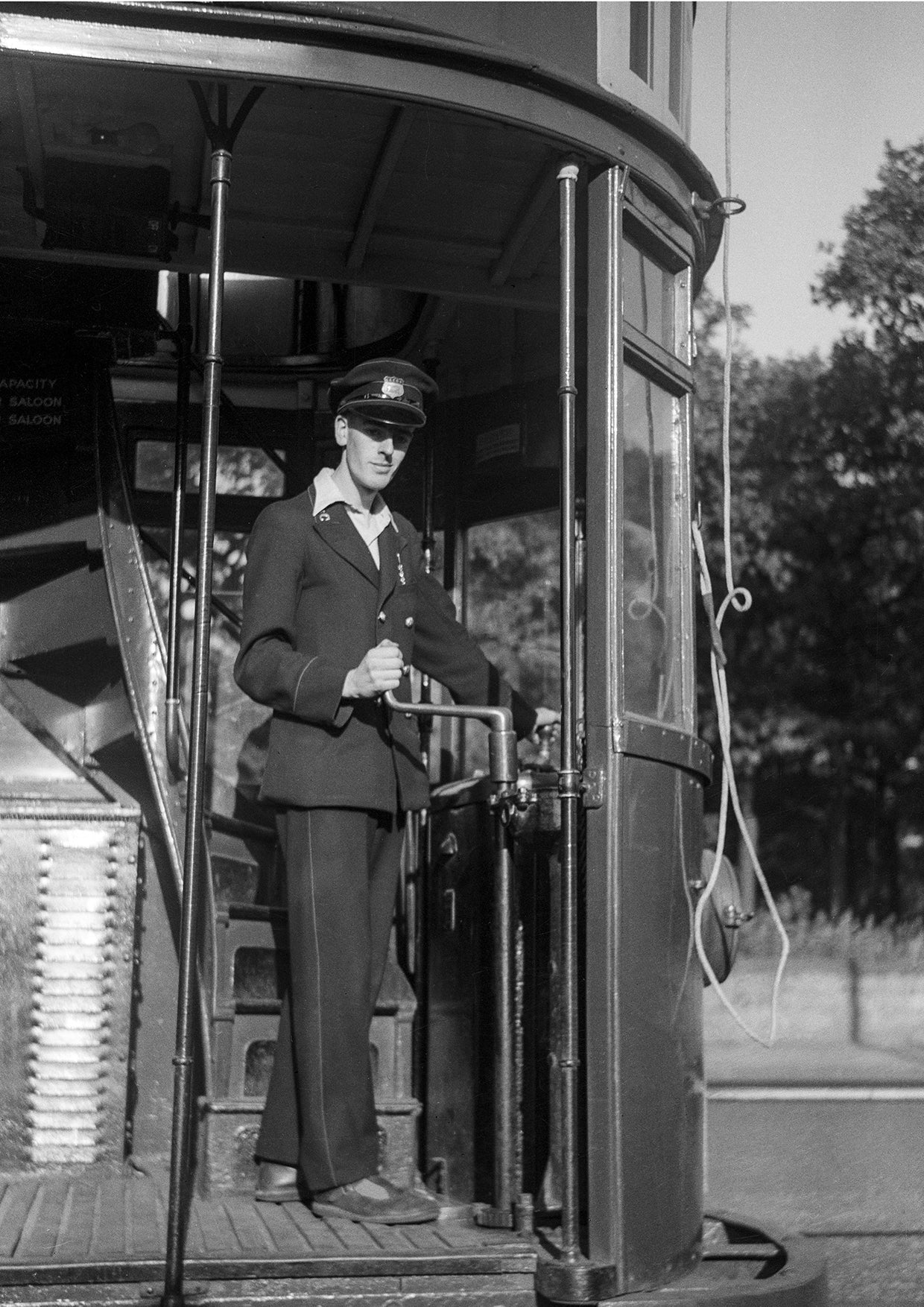Memories of Motion
On Top o't' Job - Chris Thornburn
On Top o't' Job - Chris Thornburn
Couldn't load pickup availability
British transport literature is rich in tramway histories, but authentic first-person operational accounts by tram workers are rare. We know of only four by the platform staff who actually operated Britain's tramway systems: Stan Collins' classic London memoir "The Wheels Used to Talk to Us"; "Clippie", the autobiography of WW2 Sheffield conductress Zelma Katin; "Bare Empty Sheds" by Gil Gilmartin, conductor and driver on London Transport 1947-52; and William Tollan's student-conductor Glasgow reminiscences of the early '50s, "The Wearing of the Green".
This scarcity makes the preservation of such experiences not just valuable, but historically critical.
About the Author and Historical Context
During the summer vacation periods of 1955, 1956, and 1957, Chris Thornburn worked as a student conductor on the Leeds City Transport tram system. What makes this experience historically significant is that he witnessed the inexorable decline and rundown of the Leeds trams during the middle three years of their abandonment, which ended at the final closure on 7th November 1959, when he bade farewell to several of his former colleagues.
This book is a comprehensive development of his experiences. Its focus is the crew who operated the trams: not merely what they did, but how it was done. Running to 206 pages with a full index, it represents what appears to be the only detailed first-person account of working as a conductor during the closure period of a British provincial tramway system.
The Unique Historical Value of "On Top o' t' Job"
This wasn't merely holiday employment; it was bearing witness to the end of an era. Chris learned the job from experienced drivers and conductors who had dedicated their working lives to the trams, absorbing not just technical procedures but the culture, traditions, and human drama of a transport system facing extinction. The knowledge and perspective he gained cannot be replicated because the experience no longer exists and no new accounts can be written. There are not many of him left now who have direct experience of working on first-generation tramways, and we are getting fewer.
Comprehensive Coverage of Tramway Operations
The book extensively details the training, patterns of work, and covers the various facets of the job on the road, including:
- Vocabulary: the specialised language and terminology of tramway operations
- Inspection: daily procedures and safety protocols
- Regular rotas: shift patterns and scheduling systems
- Changeovers: crew transition procedures at termini
- Money: fare collection, accounting, and ticket systems
- Weather: operational challenges in different conditions
- Traffic lights: navigation and priority systems
- Telephones: communication networks and procedures
- Points: track switching and route management
- Unplanned occurrences: emergency procedures and problem-solving
Beyond Basic Operations: Historical Analysis
A wider front provides detailed analysis, including individual tram movements on their final day, documenting the last operational services. The book offers statistical analysis of ticketing with comprehensive examination of fare systems and passenger data, alongside comparison of 1930s tram designs from the conductor's viewpoint through technical assessment from operational experience. The narrative touches on humour, capturing the lighter side of tramway life and workplace culture.
The book links to driving, as the conductor is one of a team, and brings in other tramways in Great Britain and abroad for comparison, providing a broader context for the Leeds experience.
Lavish Photographic Documentation
The book is lavishly illustrated with some 130 of Chris's own photographs, all pertinent to a point in the text and many showing the trams in their context at work. These contemporary images provide visual documentation that cannot be replicated.
Irreplaceable Primary Source Material
The book presents considerable supporting contemporary documentation retained from his service, which exists nowhere else in tramway literature. This scarcity is permanent because the material no longer exists in use.
Far from being "just another picture-book", this work is very different from others and is essential reading for anyone interested in traditional tramway operation. For heritage societies and transport museums, it belongs in reference collections alongside Jim Soper's comprehensive Leeds histories and the other memoirs. Along with the latter, it provides the missing piece: the human operational perspective that complements corporate and technical accounts. Academic and research libraries should consider it essential for transport history collections. As a primary source document with contemporary materials, it offers research value that secondary sources cannot provide.
Preserving Historical Heritage
This book fills a permanent gap in British transport literature. More importantly, it honours the memory and preserves the expertise of the thousands of men and women who operated Britain's urban tramways with skill, dedication, and pride during both their golden age and their inevitable decline.
It represents more than a book purchase. It is about supporting the preservation of working-class heritage and transport history that would otherwise be lost forever. Every copy sold helps ensure this unique perspective remains available for researchers, enthusiasts, and future generations interested in how Britain's tramway systems actually operated.
Share




